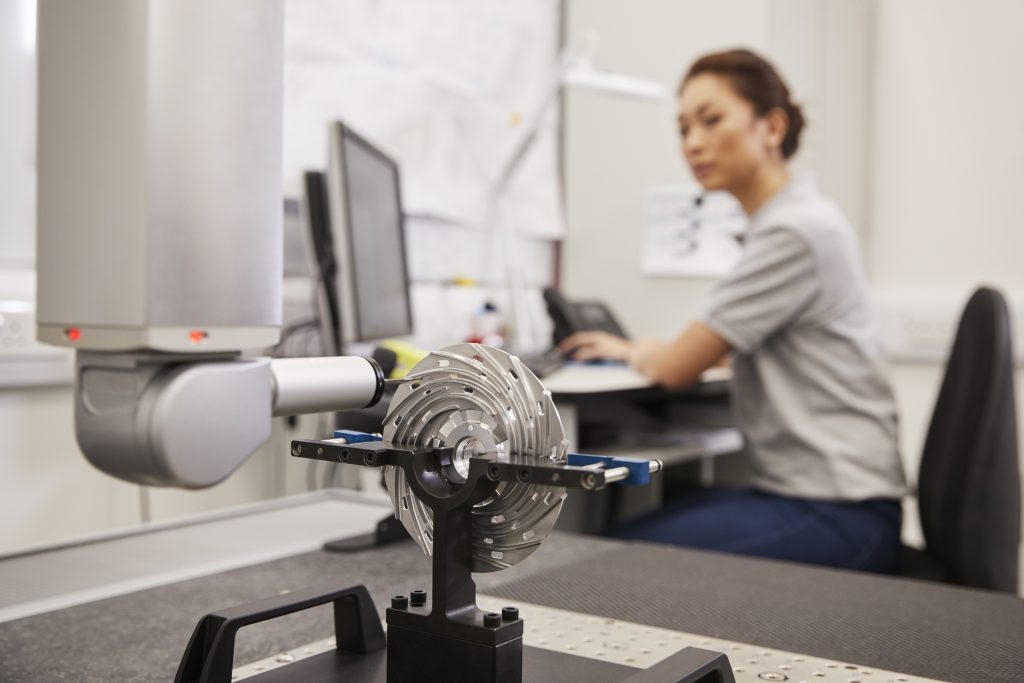Regardless of the state of the world and global markets, we are currently experiencing one of the most exciting, unpredictable and opportunity-rich times manufacturing has seen since the end of World War II. The U.S. remains one of the world’s largest manufacturing economies ― manufacturers contributed $2.33 trillion to the U.S. economy in the first quarter of 2018.
Manufacturing benefits from high-tech innovations and advanced plant factory floors, but, as with many other industries, a looming danger may threaten its progress ― access to a skilled workforce capable of operating and keeping pace with today’s rapidly evolving technology.
Studies show that talent-driven innovation, based on the quality and availability of workers (skilled labor, as well as researchers, scientists and engineers), is the number one driver of manufacturing competitiveness. Despite this fact, finding, hiring and retaining employees with the right skills has proven to be a challenge.
Currently, thousands of manufacturing jobs are going unfilled ― because people lack the skills needed to perform in their positions, baby boomers are retiring, and tools and technologies are advancing. With this number expected to grow over the next few years, manufacturers face an onslaught of hard-to-fill open positions in areas such as machining, welding, mechatronics, CNC programming, engineering, robotics and automation.
American manufacturers must regularly invest heavily in modern plants and cutting-edge equipment and operations to maintain productivity and competitive position. But too many are not investing at all ― potentially costing them their greatest opportunity and exacerbating their biggest risk. Tooling U-SME’s recent study “Industry Pulse: 2018 Manufacturing Workforce Report” found that only two out of five respondents say their companies are training people to develop the right skills for today’s manufacturing jobs, which is troubling; the industry has been sounding the alarm about the skills gap and the threat it poses, and companies can control many of the actions and steps necessary to develop and retain employees. Yet, inaction continues even though most manufacturers surveyed report they’re already feeling the effects of the skills gap.
According to the Industry Pulse report, a great majority of manufacturers say they will face significant challenges developing a skilled workforce in the next three years: Finding experienced new hires (99 percent); upskilling the incumbent workforce (92 percent); and onboarding new employees (84 percent).
But a late start does not have to doom a company to failure. With the right plan, manufacturers can execute workforce development strategies now to ward off the skills gap. Developing a strong onboarding process, instituting a formal training program, encouraging continual education and properly upskilling those responsible for training workers will help companies maintain a highly skilled incumbent workforce, even as they work to attract new talent to the industry.
Tackle Smart Training Through Apprenticeships
The skills gap may seem a big challenge to confront; however, there are existing measures companies can take, and resources to leverage, to drive their workforce training needs. A proven solution is to tap into local and regional educators, as well as national training providers, to help assess the current competency level of their workforce and determine training needs.
Manufacturing has long been an on-the-job training industry, relying on new employees to learn from more seasoned and experienced coworkers. However, in today’s advanced technology climate, a “watch what I do” training program is no longer sufficient to build a stable, reliable and safe workforce. While many companies don’t have the manpower or financial means to support a more enhanced program on their own, many regional academic institutions were originally developed with a heavy focus on applied technology and skills and can help to efficiently fill the void. Government resources are also available for structured workforce develop programs to train current and future workers.
Many of these programs are based on the time-tested strategy of apprenticeships. This earn-while-you-learn model gives students the opportunity to master their trade while earning a salary — without incurring tuition fees and loan debt that often accompany a traditional college education.
Still, over the years apprenticeships have fallen off the radar as a training option for employers, and as a result, haven’t kept pace with the demands of advanced manufacturing employers. With the skills shortage looming, companies are starting to take a renewed look at developing or expanding apprenticeship efforts but are challenged by the lack of clarity many existing apprenticeship programs provide.
The apprenticeships of yesteryear focused on time investment to signify proficiency in careers that often had more to do with aptitude than technical knowledge. Educators and employers can tackle these challenges through competency-based learning models such as Tooling U-SME’s Apprenticeship Acceleration Framework. Frameworks like these help manufacturers and educators identify the specific skills, experience and technical knowledge required to succeed in today’s advanced workplace environments. By defining specific knowledge and skill requirements that align with standard apprenticeship job functions, these frameworks allow the development of an industry-wide standard of program design, implementation and management.
Today, through competency-based learning, people are getting the real-world skills and experience apprenticeships have always provided, with applicable, focused educational content necessary to successfully complete on-the-job requirements. Advanced technologies require the need for more training hours versus just counting hours to earn journeyman status. Educators have the skills and experience necessary to help employers retool traditional apprenticeships into a more efficient and effective program.
Best Practices For Building A Strong Workforce
Developing a pipeline of highly trained employees takes an investment of funding and time but will pay off with the right strategy. Manufacturers that manage and train their workforces differently frequently outperform their peers; however, companies need help just getting started. Those that recognize the urgency but don’t know how to improve their learning and development processes can follow five best practices for building a high-performance workforce:
- Identify the business objectives. A successful training and development program must have the support of senior management. The best way to do this is to demonstrate learning’s impact on the business. Tie your training program to the bottom line.
- Define performance-based competency models. Having a system in place to codify knowledge and skills required for a specific job role is critical to ensure individuals are successful in their roles. This also ensures that institutional knowledge is passed on to the next generation as veteran workers retire. Today, more employers are using competency modeling to provide a structured way of looking at job progression, job skills assessment and workforce planning.
- Align learning solutions to develop knowledge and skills. A well-defined competency framework and aligned learning plan will eliminate unnecessary or redundant training and maximize training time to develop the knowledge and skills an employee needs.
- Structure your on-the-job training (OJT) program. Performance-based training programs should require the use of standardized OJT tools and techniques to ensure consistent delivery of training. Companies should also ensure they “train the trainers,” investing in developing their OJT mentors and instructors so they have competencies in adult learning, mentoring and delivery of OJT sessions.
- Develop and execute a measurable impact study. At the start of program design, a company should document goals related to production, quality, innovation and employee retention. Later, the team can refer back and see how the program measured up.
Implement Training for A Highly Skilled Workforce
A well-trained workforce is a competitive advantage that allows companies to drive innovation, customer satisfaction, quality, productivity and growth. The beneficial byproducts are engaged and loyal employees, satisfied stakeholders and a thriving economy.
As factory floors become more advanced and demand expands across the country, training and professional development are vital for manufacturing success and essential tactics in attracting and retaining workers who demand ongoing learning and new opportunities.
A bright new future exists in this industry, and by investing in a company’s most valuable asset — its employees ― businesses can improve worker retention, boost productivity, strengthen product quality and ensure their global competitiveness.













































